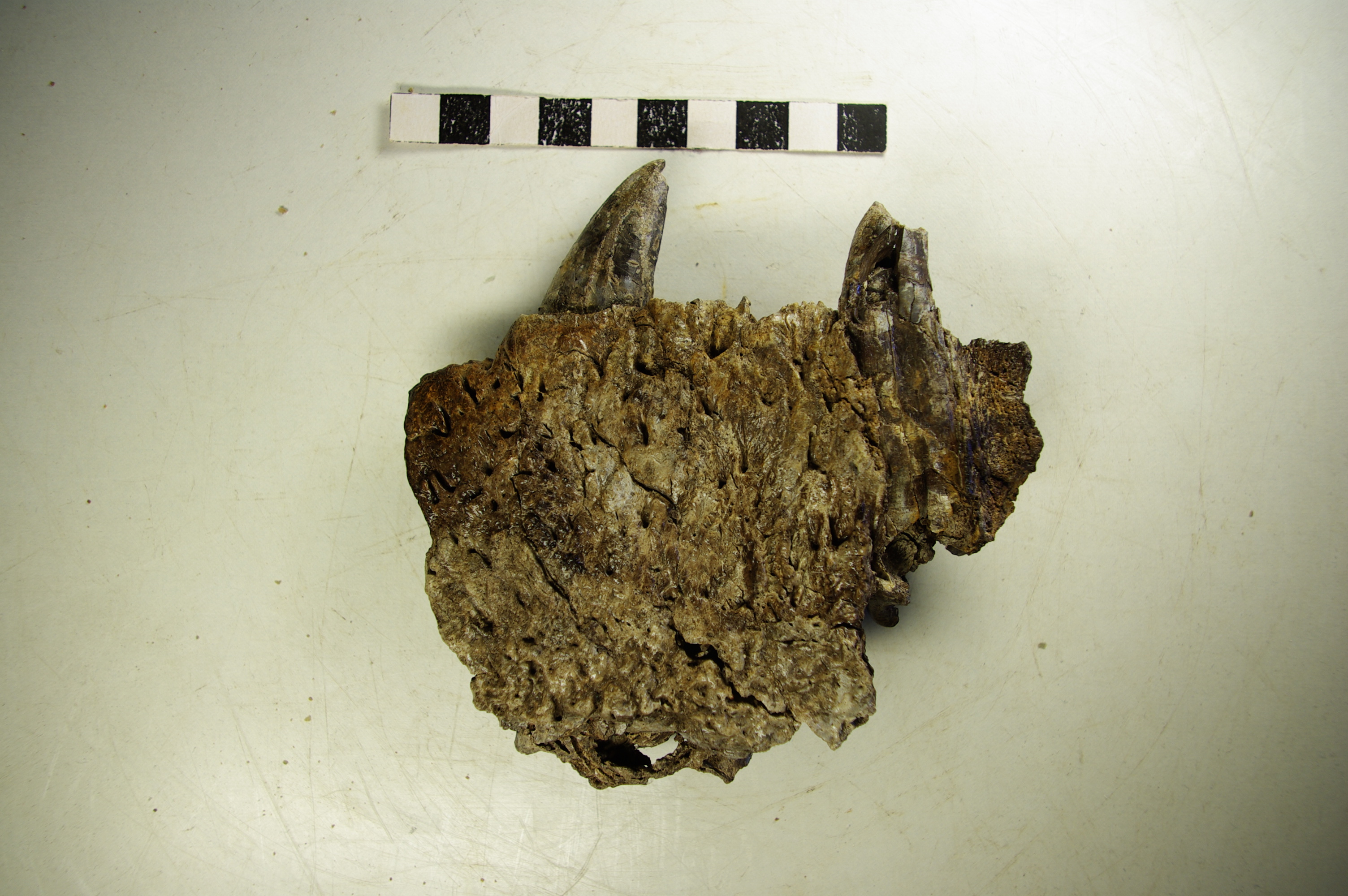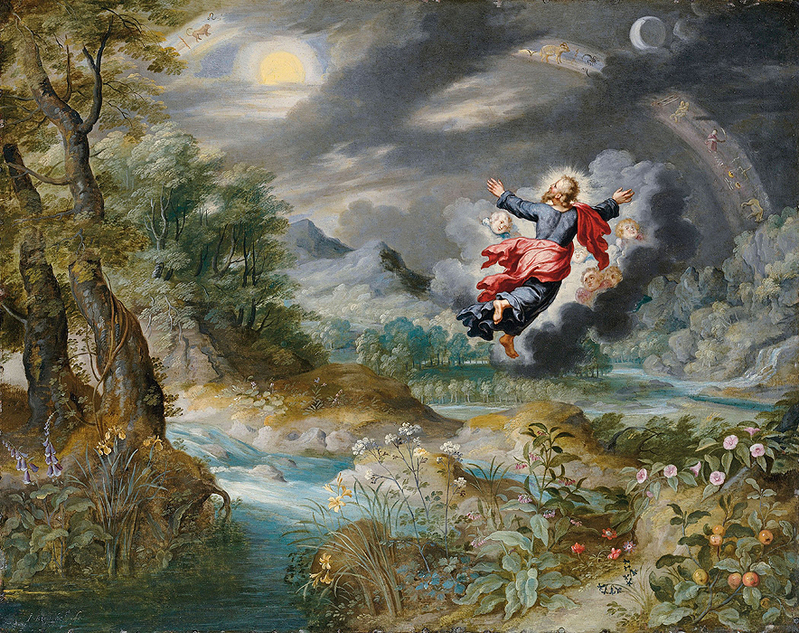|
Iberosuchus
''Iberosuchus'' (meaning "Iberian crocodile") is a genus of extinct sebecosuchian mesoeucrocodylian found in Western Europe from the Eocene. Remains from Portugal was described in 1975 by Antunes as a sebecosuchian crocodilian. This genus has one species: ''I. macrodon'' (meaning "large toothed). ''Iberosuchus'' was a carnivore, unlike the crocodilians today, they are not aquatic and are instead terrestrial. The first of its fossils were cranial remains found in Portugal, and later more fossils were found in France and Spain. They are only known from very fragmentary fossils, elements of the skull, dentary, teeth and osteoderm. History and discovery Remains of a mesocrocodylian were found in Portugal, it was named ''Iberosuchus macrodon'' in 1975 by Antunes, and is assigned as the type species. It was reclassified as a baurusuchid by Robert Carroll in 1988. In 1996 Ortega and colleges extended their range to France, they analyzed the fragmentary fossils of ''Atacisaurus crassi ... [...More Info...] [...Related Items...] OR: [Wikipedia] [Google] [Baidu] |
Sebecosuchia
Sebecosuchia is an extinct group of mesoeucrocodylian crocodyliforms that includes the families Sebecidae and Baurusuchidae. The group was long thought to have first appeared in the Late Cretaceous with the baurusuchids and become extinct in the Miocene with the last sebecids, but ''Razanandrongobe'' pushes the origin of Sebecosuchia to the Middle Jurassic. Fossils have been found primarily from South America but have also been found in Europe, North Africa, Madagascar, and the Indian subcontinent. History and phylogeny Sebecosuchia was first constructed in 1937 by George Gaylord Simpson.Simpson, G.G. 1937. "New reptiles from the Eocene of South America". ''American Museum Novitates'' 967: 1-20 In 1946 the concept was again used by American paleontologist Edwin Colbert to include ''Sebecus'' and Baurusuchidae. ''Sebecus'', which had been known from South America since 1937, was an unusual crocodyliform with a deep snout and teeth that were ziphodont, or serrated and laterally comp ... [...More Info...] [...Related Items...] OR: [Wikipedia] [Google] [Baidu] |
Sebecus
''Sebecus'' (meaning " Sebek" in Latin) is an extinct genus of sebecid crocodylomorph from Eocene of South America. Like other sebecosuchians, it was entirely terrestrial and carnivorous. The genus is currently represented by two species, the type ''S. icaeorhinus'' and ''S. ayrampu''. Several other species have been referred to ''Sebecus'', but were later reclassified as their own genera. History and species Named by American paleontologist George Gaylord Simpson in 1937, ''Sebecus'' was one of the first known sebecosuchians. Simpson described the type species, ''S. icaeorhinus'', from a fragmented skull and lower jaw found in the Sarmiento Formation. The specimen was discovered by the American Museum of Natural History's First Scarritt Expedition to Patagonia, during 1930 and 1931. Teeth had been known since 1906 when Argentine paleontologist Florentino Ameghino associated them with carnivorous dinosaurs. The more complete material found by Simpson firmly established that the ... [...More Info...] [...Related Items...] OR: [Wikipedia] [Google] [Baidu] |
Middle Eocene
The Eocene ( ) Epoch is a geological epoch that lasted from about 56 to 33.9 million years ago (mya). It is the second epoch of the Paleogene Period in the modern Cenozoic Era. The name ''Eocene'' comes from the Ancient Greek (''ēṓs'', "dawn") and (''kainós'', "new") and refers to the "dawn" of modern ('new') fauna that appeared during the epoch. The Eocene spans the time from the end of the Paleocene Epoch to the beginning of the Oligocene Epoch. The start of the Eocene is marked by a brief period in which the concentration of the carbon isotope 13C in the atmosphere was exceptionally low in comparison with the more common isotope 12C. The end is set at a major extinction event called the ''Grande Coupure'' (the "Great Break" in continuity) or the Eocene–Oligocene extinction event, which may be related to the impact of one or more large bolides in Siberia and in what is now Chesapeake Bay. As with other geologic periods, the strata that define the start and end of the ... [...More Info...] [...Related Items...] OR: [Wikipedia] [Google] [Baidu] |
Maxilla
The maxilla (plural: ''maxillae'' ) in vertebrates is the upper fixed (not fixed in Neopterygii) bone of the jaw formed from the fusion of two maxillary bones. In humans, the upper jaw includes the hard palate in the front of the mouth. The two maxillary bones are fused at the intermaxillary suture, forming the anterior nasal spine. This is similar to the mandible (lower jaw), which is also a fusion of two mandibular bones at the mandibular symphysis. The mandible is the movable part of the jaw. Structure In humans, the maxilla consists of: * The body of the maxilla * Four processes ** the zygomatic process ** the frontal process of maxilla ** the alveolar process ** the palatine process * three surfaces – anterior, posterior, medial * the Infraorbital foramen * the maxillary sinus * the incisive foramen Articulations Each maxilla articulates with nine bones: * two of the cranium: the frontal and ethmoid * seven of the face: the nasal, zygomatic, lacrimal, inferior n ... [...More Info...] [...Related Items...] OR: [Wikipedia] [Google] [Baidu] |
Suprangular
The suprangular or surangular is a jaw bone found in most land vertebrates, except mammals. Usually in the back of the jaw, on the upper edge, it is connected to all other jaw bones: dentary, angular, splenial and articular The articular bone is part of the lower jaw of most vertebrates, including most jawed fish, amphibians, birds and various kinds of reptiles, as well as ancestral mammals. Anatomy In most vertebrates, the articular bone is connected to two oth .... It is often a muscle attachment site. References Vertebrate anatomy {{Vertebrate anatomy-stub ... [...More Info...] [...Related Items...] OR: [Wikipedia] [Google] [Baidu] |
Lutetian
The Lutetian is, in the geologic timescale, a stage or age in the Eocene. It spans the time between . The Lutetian is preceded by the Ypresian and is followed by the Bartonian. Together with the Bartonian it is sometimes referred to as the Middle Eocene Subepoch. Stratigraphic definition The Lutetian was named after Lutetia, the Latin name for the city of Paris. The Lutetian Stage was introduced in scientific literature by French geologist Albert de Lapparent in 1883 and revised by A. Blondeau in 1981. The base of the Lutetian Stage is at the first appearance of the nanofossil ''Blackites inflatus'', according to an official reference profile (GSSP) established in 2011. Of two candidates located in Spain, the Gorrondatxe section was chosen.See thwebsite of Eustoquio Molinafor these candidates. The top of the Lutetian (the base of the Bartonian) is at the first appearance of calcareous nanoplankton species ''Reticulofenestra reticulata''. The Lutetian overlaps with the Geisel ... [...More Info...] [...Related Items...] OR: [Wikipedia] [Google] [Baidu] |
Supratemporal Fenestra
The skull is a bone protective cavity for the brain. The skull is composed of four types of bone i.e., cranial bones, facial bones, ear ossicles and hyoid bone. However two parts are more prominent: the cranium and the mandible. In humans, these two parts are the neurocranium and the viscerocranium (facial skeleton) that includes the mandible as its largest bone. The skull forms the anterior-most portion of the skeleton and is a product of cephalisation—housing the brain, and several sensory structures such as the eyes, ears, nose, and mouth. In humans these sensory structures are part of the facial skeleton. Functions of the skull include protection of the brain, fixing the distance between the eyes to allow stereoscopic vision, and fixing the position of the ears to enable sound localisation of the direction and distance of sounds. In some animals, such as horned ungulates (mammals with hooves), the skull also has a defensive function by providing the mount (on the frontal ... [...More Info...] [...Related Items...] OR: [Wikipedia] [Google] [Baidu] |
Postorbital Bone
The ''postorbital'' is one of the bones in vertebrate skulls which forms a portion of the dermal skull roof and, sometimes, a ring about the orbit. Generally, it is located behind the postfrontal and posteriorly to the orbital fenestra. In some vertebrates, the postorbital is fused with the postfrontal to create a postorbitofrontal. Birds have a separate postorbital as an embryo, but the bone fuses with the frontal Front may refer to: Arts, entertainment, and media Films * ''The Front'' (1943 film), a 1943 Soviet drama film * ''The Front'', 1976 film Music * The Front (band), an American rock band signed to Columbia Records and active in the 1980s and e ... before it hatches. References * Roemer, A. S. 1956. ''Osteology of the Reptiles''. University of Chicago Press. 772 pp. Skull {{Vertebrate anatomy-stub ... [...More Info...] [...Related Items...] OR: [Wikipedia] [Google] [Baidu] |
Saint-Martin-de-Londres
Saint-Martin-de-Londres (; oc, Sant Martin de Londras) is a commune in the Hérault department in the Occitanie region in southern France. Geography Climate Saint-Martin-de-Londres has a mediterranean climate (Köppen climate classification ''Csa''). The average annual temperature in Saint-Martin-de-Londres is . The average annual rainfall is with October as the wettest month. The temperatures are highest on average in July, at around , and lowest in January, at around . The highest temperature ever recorded in Saint-Martin-de-Londres was on 1 August 1947; the coldest temperature ever recorded was on 4 February 1963. Population See also *Communes of the Hérault department The following is a list of the 342 Communes of France, communes of the Hérault Departments of France, department of France. The communes cooperate in the following Communes of France#Intercommunality, intercommunalities (as of 2020): References ...[...More Info...] [...Related Items...] OR: [Wikipedia] [Google] [Baidu] |
Robiac-Rochessadoule
Robiac-Rochessadoule (; oc, Robiac e Ròca-sadola) is a commune in the Gard department in southern France. Population See also *Communes of the Gard department This is a list of the 351 Communes of France, communes of the Gard Departments of France, department of France. The communes cooperate in the following Communes of France#Intercommunality, intercommunalities (as of 2020): References Communes of Gard {{Gard-geo-stub ...[...More Info...] [...Related Items...] OR: [Wikipedia] [Google] [Baidu] |
Right Premaxilla Fossil
Rights are legal, social, or ethical principles of freedom or entitlement; that is, rights are the fundamental normative rules about what is allowed of people or owed to people according to some legal system, social convention, or ethical theory. Rights are of essential importance in such disciplines as law and ethics, especially theories of justice and deontology. Rights are fundamental to any civilization and the history of social conflicts is often bound up with attempts both to define and to redefine them. According to the ''Stanford Encyclopedia of Philosophy'', "rights structure the form of governments, the content of laws, and the shape of morality as it is currently perceived". Definitional issues One way to get an idea of the multiple understandings and senses of the term is to consider different ways it is used. Many diverse things are claimed as rights: There are likewise diverse possible ways to categorize rights, such as: There has been considerable debat ... [...More Info...] [...Related Items...] OR: [Wikipedia] [Google] [Baidu] |
Nostril
A nostril (or naris , plural ''nares'' ) is either of the two orifices of the nose. They enable the entry and exit of air and other gasses through the nasal cavities. In birds and mammals, they contain branched bones or cartilages called turbinates, whose function is to warm air on inhalation and remove moisture on exhalation. Fish do not breathe through noses, but they do have two (but cyclostomes have merged into one) small holes used for smelling, which can also be referred to as nostrils. In humans, the nasal cycle is the normal ultradian cycle of each nostril's blood vessels becoming engorged in swelling, then shrinking. The nostrils are separated by the septum. The septum can sometimes be deviated, causing one nostril to appear larger than the other. With extreme damage to the septum and columella, the two nostrils are no longer separated and form a single larger external opening. Like other tetrapods, humans have two external nostrils (anterior nares) and two additi ... [...More Info...] [...Related Items...] OR: [Wikipedia] [Google] [Baidu] |







